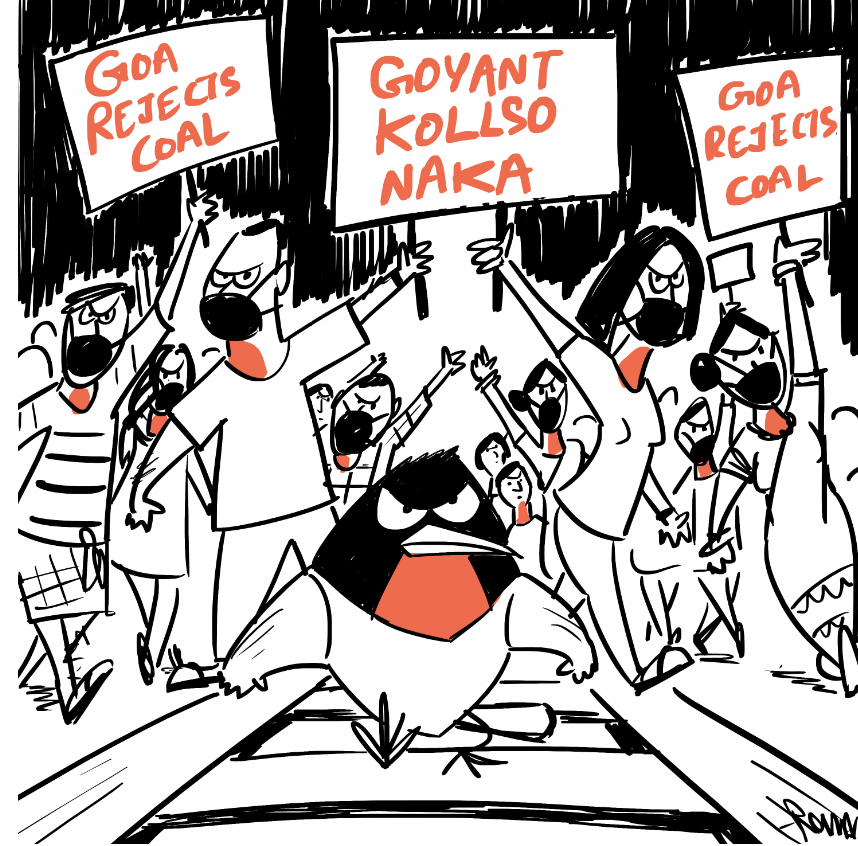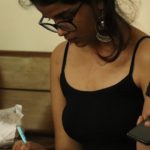
Goa’s coastline accounts for just 2.1% of the Indian coastline but is ubiquitous in the popular cultural fabric of the country through beach themed posters and palm tree motifs sold everywhere. In contrast to this lies the case of Mollem, a UNESCO-tagged global biodiversity hotspot which has recently received the spotlight— that it has deserved for long— for worrying reasons.
A protected area of about 240 square kilometres, Mollem is located in the Western Ghats along the eastern border with Karnataka, a part of the almost contiguous forest stretch from Gujarat to Kanyakumari; these forests are older than the Himalayas. First known as Mollem Game Sanctuary, it was declared a wildlife sanctuary and renamed as Bhagwan Mahaveer Sanctuary in 1969; the forest cover here is so dense that sunlight does not even reach the forest floor in many places as stated by the Goa Tourism Development Corporation website. The area boasts of gorgeous waterfalls such as the Dudhsagar waterfalls and striking biodiversity with over 235 bird species, 219 butterfly species, 70 mammal species, 45 reptile species, 44 fish species and 27 amphibian species. All this, however, is threatened as three government-funded infrastructure projects— namely, the double-tracking of the railway line, the four-lane transformation of National Highway 4-A and the laying of a 400kV transmission line — snake through board approvals under the cover of the lockdown and are prepared to strike Mollem.
To understand the recent developments around Mollem, it is important to know what really runs the golden coastal state of Goa. Along with sparkling coastal tourism, Mining has been the sibling economic mainstay for the state; the state is home to some of the country’s key mining companies, such as Sesa Sterlite Limited, V.M. Salgaocar and Brothers and Fomento Resources. Accounting for a substantial portion of the country’s iron ore exports, Goa has become one of the primary raw material exporting states. The demand for iron ore and manganese peaked during the years leading to the 2008 Beijing Olympics; this induced an iron ore export rush to China which at times was in quantities much beyond the state’s capacity. Goa’s mineral resources were overexploited and caused irreparable damage to the environment, with mining in the state under dark clouds ever since. In 2014 the Supreme Court found that mining firms in Goa had been conducting mining activities without a valid lease after 2007; the Goa government retrospectively backdated lease renewals to regularise mining but this was ruled against in 2018 by the SC. The apex court also observed that the ministry of environment and forests (MoEF) had “played ball by lifting the abeyance order in respect of the environment clearances”.
Against this background, it is not astonishing that the National Board of Wildlife’s standing committee, and then its expert appraisal committee approved of 16 projects including that affecting Mollem under the cover of a national Covid19 pandemic induced lockdown. In December 2019, Prakash Javadekar’s board had accepted a proposal to double the existing railway track through the jungle, now an additional four-lane highway expansion, as well as a 400KV electricity transmission line were targeting the state. Activists’ claims— that the infrastructure projects are for mining facilitation— have met with rebuttals from the Government saying that the projects have nothing to do with coal or mining. According to the Government, the new power line is for the purpose of providing the state with much-needed electricity, the highway is for meeting the demands of growing traffic and the extra railway line will facilitate goods and passenger trains. It has also been said that the plans cutting through the reserve are a part of a nation-wide central government initiative to build new ports and enhance connectivity between the older ones.
Goa Chief Minister Pramod Sawant recently said that the government also wants a coal-free Goa and a pollution-free environment and that they are searching for alternatives for coal and aim to eventually stop all coal transportation, however, Goa Government’s earlier interventions in the coal export business as mentioned above say otherwise.

Goa has seen numerous threats to its environment and biodiversity in the past and has been an astoundingly litigious state with many judgements in its favour such as those of the rejection of Thapar DuPont’s Nylon 6.6 plant in the 1990s, and the cancellation of special economic zones in 2007. True to this spirit, scientists, conservationists, academicians, artists, architects, lawyers, students and locals among others have come out in vehement protests against these infrastructural projects but the felling of trees and clearing patches of forests in Mollem has already begun, with the protestors being projected as enemies of development. An attempt to shrug off the responsibility of clean energy and sustainability was also made by the power minister of Goa Nilesh Cabral when he said that the protestors must first start using solar energy.
The Save Mollem movement, led by biologists and conservationists has gained impressive momentum across social media and on-ground through social media activism and real-time protests. Art, poetry, science and memes along with night long protests on the railway line have been the key ways in which the protestors have managed to make their anger, disappointment and fear into a force born out of love: a force to be reckoned with.
The state administration has experienced disorientation due to the unexpected mass of and might of the protests. And while they have been conducting some dialogue, the government has been unable to come clean about the reality of the project or find any sensible rebuttals to the protestors’ concerns. The movement has brought to light the fact that environmental policymaking is often devoid of the thoughtfulness and the spirit of sustainability.
Pavitra is a second year History student at Lady Shri Ram College for Women. She writes about culture, History and politics.



How-do-you-do, i study your blog often and i own an analogous one and i used to be just wondering if you get much of spam comments? If thus how do you stop it, any plugin or anything youll be able to advise? I get thus often lately its driving me mad so any help is very abundant appreciated. for older folks, retirement or a huge promotion at work is a time when celebration events are going to be a great idea.
I’m not sure ᴡhy but this site iѕ loading incredibly slow foг me.
Is anyone else having this issue or is it a issue on my end?
I’ll checҝ back later and see if tһe problem still existѕ.